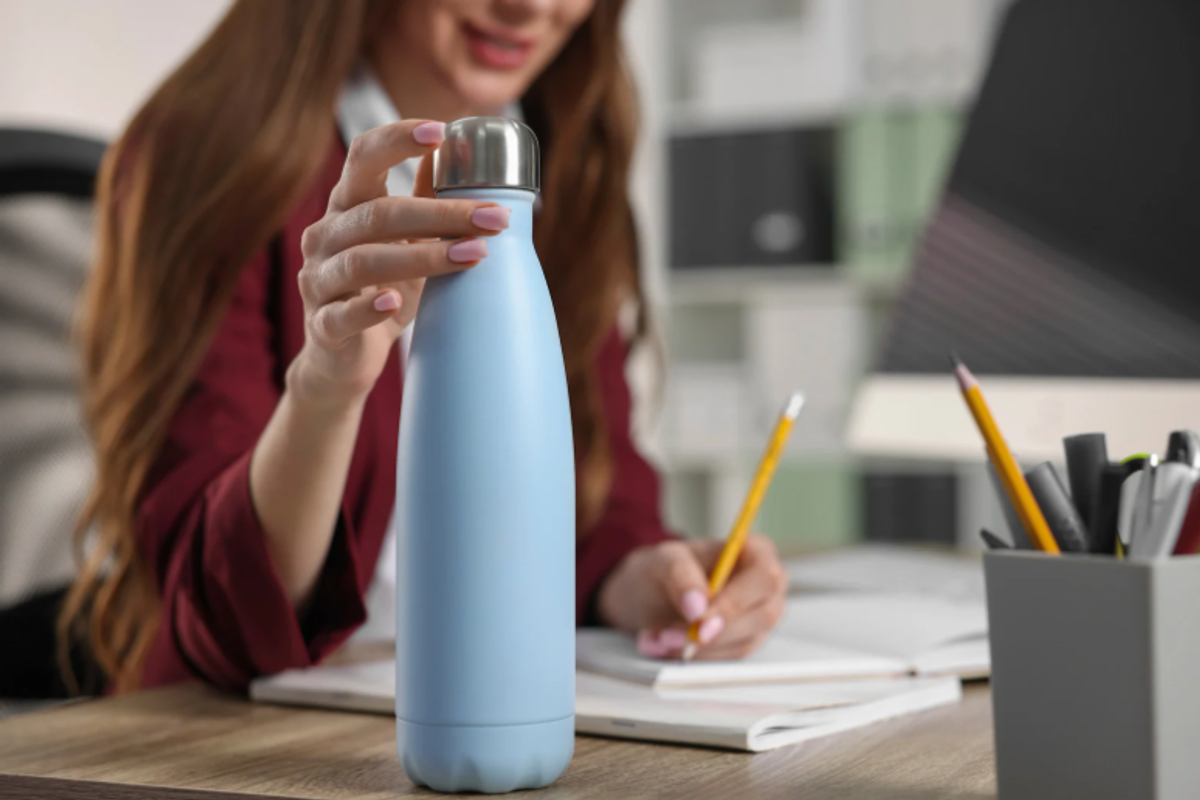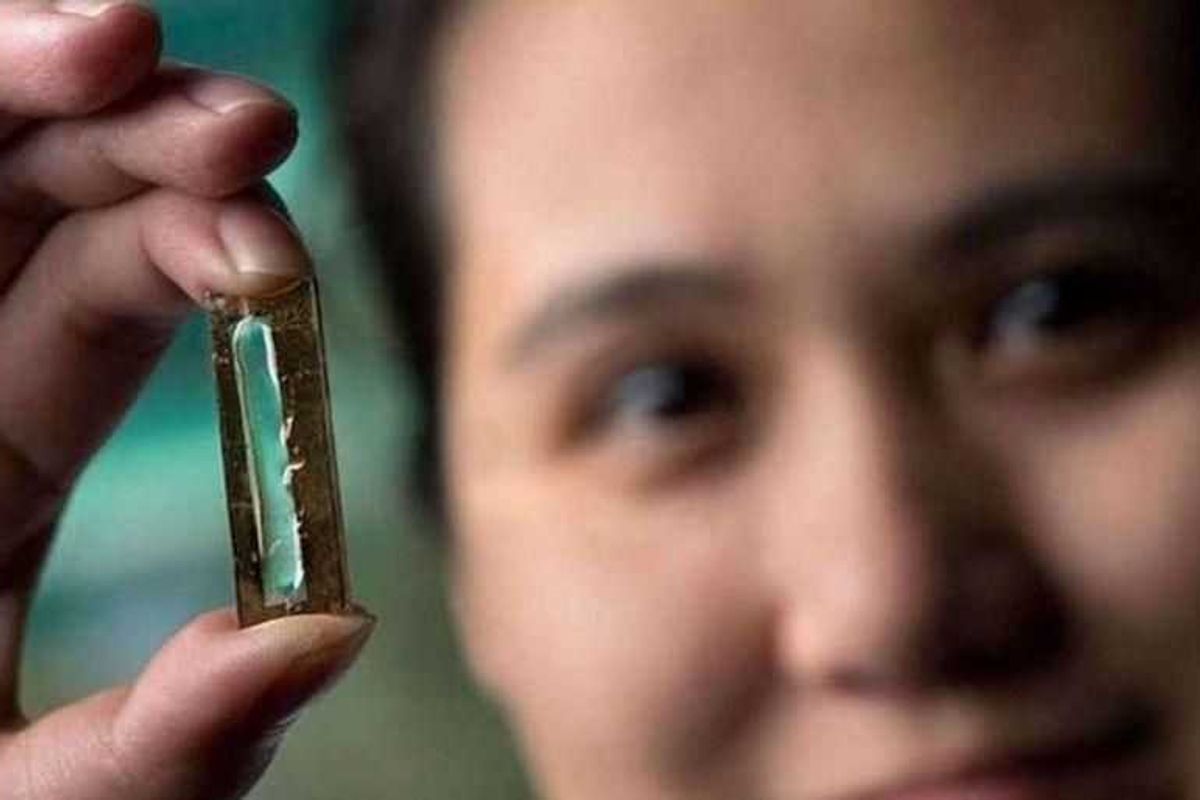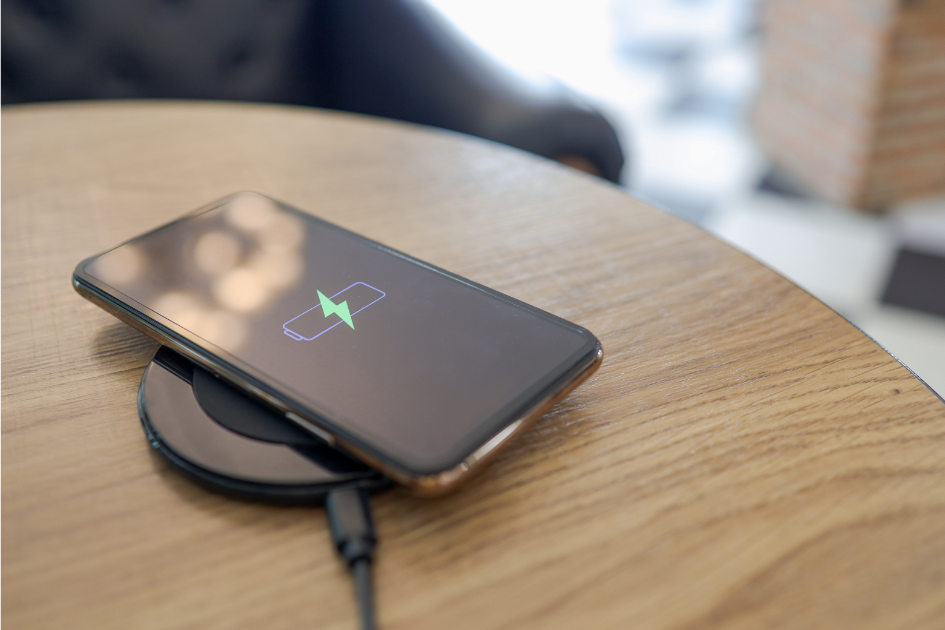How often should you wash your water bottle? A doctor finally settles the fierce debate
Your water bottle is a germ haven.

This is how often you should be washing your reusable water bottle.
Staying hydrated has never been easier thanks to reusable water bottles. But one of the biggest downsides to using water bottles is having to wash them. And if we're honest, most of us probably go *way too long* between uses before giving them a deep cleaning.
You may be curious about how often you should be washing your water bottle—and the possible negative health effects that can happen if you neglect to. Unfortunately, if you simply rinse and re-fill without thoroughly washing with soap and water—it's not cutting it.
"Wash it with soap and warm water at least every other day," says Dr. Shanina C. Knighton, PhD, RN, CIC, Research Associate Professor, Frances Payne Bolton School of Nursing at Case Western Reserve University. She adds that if you drink anything beyond just plain water—such as adding lemon to water, adding flavor to it, protein drinks or coffee--then your water bottle should be washed immediately and daily.
"Sugar loves yeast, mold, and bacteria and when water bottles are left with fluids sitting in them for days odors can occur," says Dr. Knighton.
Your water bottle can quickly become a petri dish as bacteria settles in, forming a biofilm (a slimy film or thin coating of germs). "This biofilm protects bacteria from casual rinsing, which is why that weird taste and smell develops even when you are 'just using water' to clean it out," she adds.
Failing to properly wash your water bottle can lead to sickness as bacteria continues to grow and comes in contact with your mouth. "Unwashed bottles can harbor dangerous bacteria, including E. coli, Salmonella and Staphylococcus. Mold and yeast can accumulate in bottles that are stored while damp."
Dr. Knighton adds that an upset stomach (nausea, vomiting and diarrhea) or food poisoning symptoms can stem from a dirty water bottle. "We know the impact of mold are attached to respiratory issues. Even something such as a rash around the mouth or skin infection can occur," she says.
- YouTube www.youtube.com
How to wash your water bottle
Warm water is best to clean your water bottle—and washing with cold water is not recommended. "Cold water does not break down bacteria or any oils and residues that may be in bottles," says Dr. Knighton. "If the water is too hot, excessive heat can damage plastic or can weaken rubber water seals."
You should also be hand-washing your water bottles. "I do not recommend harsh chemicals and the use of a dishwasher for water bottles. Given the depth of water bottles adequate cleaning may happen best if by hand," adds Dr. Knighton. "I always suggest to check the manufacturer's suggestions for cleaning."

To properly wash your water bottle, you can also use vinegar instead of soap:
- Fill your bottle halfway with white vinegar, top with warm water and let it sit for about 30 minutes.
"It can help with any bacteria or crusty build ups that may be hard to reach inside of bottles," says Dr. Knighton.
She also suggests investing in a bottle brush to help you get to areas that are hard to reach with a sponge or dish towel, such as straws, lids or mouthpieces. - Always allow your bottles to adequately dry before putting the caps back on.
"Hang them upside down on a rack where they are not touching the surface," says Dr. Knighton. "If you put the tops back on them before allowing them to dry you are trapping moisture, which can become a breeding ground for germs."
Finally, Dr. Knighton recommends that you replace your water bottles if you see any mold spots or if the rubber seals become worn down or hard to clean.
Happy hydrating!
- Researchers tested a bottle of Fiji Water against a glass of tap water. This is what they found. ›
- You're drinking water wrong: Why doctors say temperature matters more than you think ›
- Teacher explains how '90s kids never had water bottles in school and 'somehow' survived ›
- Scientists test 3 popular bottled waters for nanoplastics using new tech, and yikes - Upworthy ›
- Scientists tested 3 popular bottled water brands for nanoplastics. The results are alarming. - Upworthy ›
- Researchers tested a bottle of Fiji against a glass of tap water. The results were alarming. - Upworthy ›



 TikTok · Ale
TikTok · Ale
 Autumn created this piece when she was just 5 years old.Autumn de Forest
Autumn created this piece when she was just 5 years old.Autumn de Forest  Autumn de Forest paints Autumn de Forest
Autumn de Forest paints Autumn de Forest  An Autumn de Forest paintingAutumn de Forest
An Autumn de Forest paintingAutumn de Forest 
 Autumn de Forest stands with the Pope who looks at one of her paintings Autumn de Forest
Autumn de Forest stands with the Pope who looks at one of her paintings Autumn de Forest 


 Phone charging.
Phone charging. bill nye chemistry GIF by NETFLIX
bill nye chemistry GIF by NETFLIX 
 The Memorial to the Murdered Jews of EuropeBy Alexander Blum - Own work, CC BY-SA 4.0
The Memorial to the Murdered Jews of EuropeBy Alexander Blum - Own work, CC BY-SA 4.0 Move over, Mario Brothers.
Move over, Mario Brothers. 